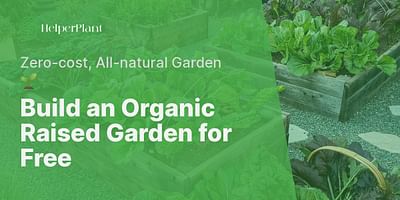Hadley is an experienced horticulturist with a gardening career spanning over two decades. She holds a deep interest in companion planting and continuously indulges in exploring new plant pairings. When not immersing herself in the world of botany, Hadley can be found enjoying nature trails and indulging in birdwatching.
Designing a beautiful garden using companion planting
Designing a beautiful garden is not just about choosing the right plants; it's also about creating a harmonious and beneficial environment for your plants to thrive. Companion planting is a fantastic technique that can help you achieve just that. By strategically pairing compatible plants, you can enhance growth, deter pests, and create a visually stunning garden. Here are some tips to help you design a beautiful garden using companion planting:
1. Plan your garden layout: Before you start planting, take some time to plan your garden layout. Consider the size and growth habits of each plant, as well as their sunlight and water requirements. This will help you determine the best location for each plant and ensure they have enough space to grow without overcrowding.
2. Choose compatible plants: When selecting plants for your garden, choose ones that have complementary characteristics. Some plants have natural affinities for each other, while others can help repel pests or attract beneficial insects. For example, planting marigolds alongside tomatoes can help deter nematodes, while growing basil near tomatoes can enhance their flavor.
3. Consider plant height: To create visual interest and depth in your garden, consider the height of your plants. Tall plants can provide shade or act as a backdrop for shorter plants. For instance, you can plant sunflowers behind a row of lettuce or kale to create a stunning focal point.
4. Use color combinations: Think about the colors of your plants and how they can complement each other. Pairing plants with contrasting colors can create a vibrant and eye-catching display. For example, planting purple sage alongside yellow marigolds can create a striking contrast.
5. Include edible and ornamental plants: Companion planting doesn't have to be limited to vegetables and herbs. Incorporating ornamental flowers and shrubs can add beauty and diversity to your garden. Consider planting flowers like bee balm, chamomile, or lavender, which not only attract pollinators but also add color and fragrance to your garden.
6. Rotate your crops: To maintain soil health and prevent the buildup of pests and diseases, it's essential to rotate your crops each year. This means planting different types of plants in different areas of your garden each season. By doing so, you can break pest and disease cycles and ensure the long-term success of your garden.
Remember, companion planting is not an exact science, and it may require some trial and error to find the best combinations for your garden. Experiment, observe, and adapt as needed. With time, you'll discover the perfect combinations that will not only create a beautiful garden but also promote healthy growth and bountiful harvests.
So go ahead, unleash your creativity, and design a stunning garden using the power of companion planting. Happy gardening!















